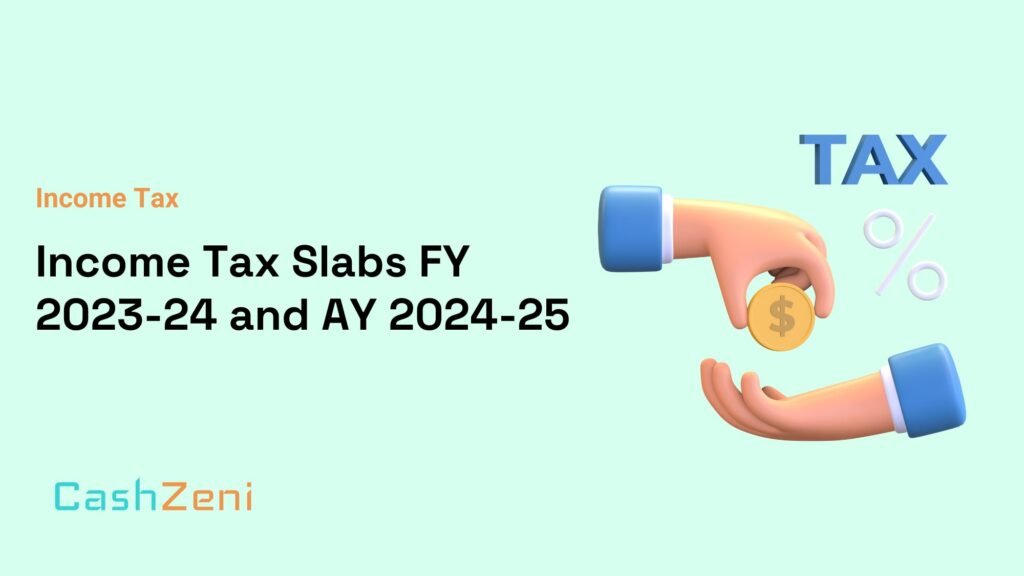Income tax in India is a tax levied by the government on the income earned by an entity in a financial year. The entities liable to pay income tax include individuals, Hindu Undivided Families (HUFs), companies, firms, an association of persons, a body of individuals, local authority, and any other artificial judicial person. The Income Tax Act of 1961 governs the provisions for income tax in India and the government makes periodic amendments to this Act.
Table of Contents
Understanding Income Tax Slabs
Income tax slabs are the brackets that determine the rate at which your income will be taxed. The system is designed to be progressive, meaning the tax rate increases as your income increases. This ensures that those with higher incomes contribute a larger percentage of their income as tax. The tax slabs are categorized based on the age and residential status of the taxpayer.
In India, individual taxpayers are divided into three categories:
- Resident individuals below the age of 60
- Resident senior citizens aged between 60 and 80
- Resident super senior citizens aged above 80
Each of these categories has different tax slabs.
Income tax exemptions and deductions
Now, time for some good news. You already know that the government allows tax deductions and exemptions. These tax benefits lower your taxable income, which leads to reduced tax. However, these are available only if you choose to pay taxes as per the old income tax slabs in India.
Exemptions
Exemptions are available for salaried individuals. If you check the salary slip closely, it has some components like basic pay, travel allowance, House Rent Allowance (HRA), and others. Some of these incomes are exempted from taxation. For example, you receive HRA from the employer if you are currently living in a rented house. Even though it is a source of income, there is no need to pay any tax on it.
Deductions
Deductions are calculated on your total income during a financial year. It includes all your investments and salary. To begin with, salaried people get a standard deduction of ₹50,000 on their salary. Furthermore, the Income Tax Act, 1961 has various sections under which the government allows other deductions.
Some examples are as follows:
- Section 80D: It allows a yearly tax deduction of up to ₹25,000 on the premium paid towards health insurance policies. If you buy the Mediclaim for your parents, you will get an additional deduction of up to ₹25,000.
- Section 80E: It allows a tax deduction on the interest paid for the repayment of an educational loan.Section 80G: It allows a tax deduction on the amount paid as a donation to specific charitable organizations and relief funds.
- Section 80EE: It allows a yearly tax deduction of up to ₹50,000 on the interest paid for the repayment of a home loan.
- Section 80C: It allows a yearly tax deduction of up to ₹1.5 lakhs for investments made in National Saving Certificate (NSC), Public Provident Fund (PPF), Sukanya Samriddhi Yojana (SSY), Unit-Linked Insurance Plans (ULIPs), life insurance, Employee Provident Fund (EPF), principal payment towards home loan, Equity-Linked Savings Scheme (ELSS), Senior Citizen Savings Scheme (SCSS), and much more.
Difference between Financial Year and Assessment Year
Now that the question, “what is income tax?” is answered, it is time to know when to pay it. One of the important aspects of income tax filing is that you need to pay the tax for your income during the previous year, known as the Financial Year (FY). The year after FY is known as the Assessment Year (AY). The government assesses and taxes your income during the AY. Both FY and AY are between 1st April and 31st March.
During the AY, you need to file your taxes using the Income Tax Return (ITR) form.
What Is an ITR Form?
It is a form that you need to fill to submit the taxes. Here, you are required to provide information related to your income and applicable taxes to file income tax.
Things to know while filing the ITR form
There are seven types of ITR forms for different types of taxes in India that you need to choose from depending on your source of income, amount of income, and other factors.
- ITR-1: Resident individuals with income up to ₹50 lakhs from salary, pension, one house property, and other sources.
- ITR-2: Individuals or HUFs with income over ₹50 lakhs from sources under ITR-1 + capital gains, more than one house property, and foreign income.
- ITR-3: ITR-2 + income from a business, partnership, and presumptive income over ₹50 lakhs.
- ITR-4: Resident individuals, HUFs, and partnership firms (except Limited Liability Partnership) with presumptive income from sources under ITR-1 if income is up to ₹50 lakhs.
- ITR-5: Applicable for firms, AOP, LLP, and BOI, artificial juridical person (AJP), insolvent’s estate, investment funds, business trust, and estate of deceased.
- ITR-6: Companies not claiming Section 11 deductions.
- ITR-7: Persons and companies required to submit returns under Section 139(4A), 139(4B), 139(4C), 139(4D), 139(4E), or 139(4F).
E-filing of Income Tax Returns
You can opt for income tax e-filing to complete the process online. You may visit the Income Tax Portal and register with your Permanent Account Number (PAN). Next, you must choose the ITR form applicable for you and fill up the required sections. You can then submit it and file the tax online.
Taxation for freelancers vs. salaried employees
- Salaried individuals: If you are a salaried person, the salary you get in your bank account is after tax deductions. Your employer pays the salary only after deducting the taxes as per your investment and rent declarations.
- Freelancer: If you are a freelancer, your clients deduct the Tax Deducted at Source (TDS) from your income before making the payment. They submit the TDS to the government on your behalf. You still need to submit ITR by declaring your total income, the tax you are supposed to pay, and the amount of tax already paid. If you have already paid more than the due amount, you can apply for a refund. On the other hand, if you have paid less than the tax payable, you need to pay the remaining amount.
Understanding with an example
Now that you know the basic concepts of income tax, let us look at an example to get a clearer idea about how the calculation works.
Suppose Swati makes ₹1 lakh a month from her job. So, with an annual income of ₹12 lakhs, she belongs to the 30% tax slab. According to the Income Tax Act, 1961, she must pay ₹1,12,500 + 30% of taxable income over ₹10 lakhs (₹2 lakhs in Swati’s case).
So, her total payable tax before deductions will be ₹1,12,500 + ₹60,000 (30% of ₹2 lakhs) = ₹1,72,500.
On the other hand, if Swati decides to forgo the deduction, she can pay taxes according to the new regime. In that case, she would have to pay ₹75,000 + 20% of taxable income over ₹10 lakhs (₹2 lakhs in Swati’s case).
So, she will have to pay ₹75,000 + ₹40,000 (20% of ₹2 lakhs) = ₹1,15,000.
Union Budget 2022 and New Income Tax Rates
Every year, the government presents the Union Budget, which outlines the financial plan for the upcoming financial year. The budget includes changes in tax slabs, introduction of new taxes, and abolition or alteration of existing taxes.
In the Union Budget 2022-23, presented by Finance Minister Nirmala Sitharaman, no changes were proposed in the existing income tax slabs and the respective applicable tax rates. The income tax rates have been kept the same from FY 2020-21. The individual taxpayers will have to choose between either the existing or old and new tax regimes.
New Tax Regime- Income Tax Slab 2020-21
The new tax regime was introduced in the Union Budget 2020. Under the new regime, taxpayers have the option to pay taxes at lower rates, provided they forego certain exemptions and deductions available under the Income Tax Act. The new regime aims to simplify the tax structure by eliminating various deductions and exemptions.
The new tax regime includes the income tax slab for the 2020-21 financial year, or the 2021-22 annual year. Individuals can opt for the new tax regime and avail lower tax rates while filing ITR. Please note that the tax rates in the new tax regime are the same for all categories of individuals, i.e., individuals below the age of 60 years, senior citizens, and super senior citizens. The tax rate is also the same for HUFs.
Here is a breakdown of the applicable tax rates as per the new tax regime:
| Income Tax Slab | Applicable Tax Rate as per the New Tax Regime |
| Up to Rs 2.5 lakhs | Nil |
| Rs 2.5 lakhs – Rs 5 lakhs | 5% (exemption available under section 87a of the Income Tax Act) |
| Rs 5 lakhs – Rs 7.5 lakhs | 10% |
| Rs 7.5 lakhs – Rs 10 lakhs | 15% |
| Rs 10 lakhs – Rs 12.5 lakhs | 20% |
| Rs 12.5 lakhs – Rs 15 lakhs | 25% |
| Above Rs 15 lakhs | 30% |
In addition to the aforementioned Indian tax slabs, tax-paying individuals will also have to bear an additional Health and Education cess of 4% in all the categories. There is also a list of surcharges applicable for higher income groups:
| Income | Applicable Surcharge (on the Income Tax) |
| Above Rs 50 lakhs | 10% |
| Above Rs 1 crore | 15% |
| Above Rs 2 crores | 25% |
| Above Rs 5 crores | 37% |
Existing or Old Income Tax Regime
The old or existing tax regime allows taxpayers to avail various exemptions and deductions under the Income Tax Act, thereby reducing their taxable income. However, the tax rates under the old regime are higher than the new regime.
The income tax rates for respective IT brackets in the old tax regime vary for different categories of individuals. Here is a breakdown for each category:
Individuals Below 60 Years of Age and HUFs
| Income Tax Slab | Applicable Tax Rate |
| Up to Rs 2.5 lakhs | Nil |
| Rs 2.5 lakhs – Rs 5 lakhs | 5% |
| Rs 5 lakhs – Rs 10 lakhs | 20% |
| Above Rs 10 lakhs | 30% |
Senior Citizens of Age Between 60 and 80 Years
| Income Tax Slab | Applicable Tax Rate |
| Up to Rs 3 lakhs | Nil |
| Rs 3 lakhs – Rs 5 lakhs | 5% |
| Rs 5 lakhs – Rs 10 lakhs | 20% |
| Above Rs 10 lakhs | 30% |
Super Senior Citizens Above 80 Years of Age
| Income Tax Slab | Applicable Tax Rate |
| Up to Rs 5 lakhs | Nil |
| Rs 5 lakhs – Rs 10 lakhs | 20% |
| Above Rs 10 lakhs | 30% |
Key Takeaways from Old Tax Regime
- Unlike the New Tax Regime, the basic exemption limit in the Old Tax Regime is up to Rs 2.5 lakhs for individuals below 60 years of age and HUFs, Rs 3 lakhs for senior citizens, and Rs 5 lakhs for super senior citizens.
- The Old Tax Regime also imposes an additional Health and Education cess of 4% on the calculated tax amount.
- The surcharge applicable for higher income groups is as follows:
| Income | Applicable Additional Surcharge (On the calculated income tax) |
| Rs 50 lakhs – Rs 1 crore | 10% |
| Above Rs 1 crore | 15% |
- The Old Tax Regime also allows individual taxpayers of all age groups to enjoy around 70 more exemptions than the New Tax Regime. The additional exemptions are as follows:
- Leave Travel Allowance
- House Rent Allowance (HRA)
- Exemption of Interest Paid on Home Loan
- Employer’s contribution to the employee’s NPS account
- Several deductions under Section 80C, 80CCC, and 80CCD, 80TTA, 80TTB, 80E, 80DD, 80DDB, 80EE, 80EEA, 80EEB, 80G, 80GG, 80GGA, 80GGC, 80IA, 80IAB, 80IAC, 80IB, and 80IBA, 80JJA
- Allowances for MPs/MLAs
Old Tax Regime Vs New Tax Regime: Which One is Better?
The choice between the old and new tax regime depends on the individual’s financial situation, income level, and ability to manage tax-related documentation.
The Old Tax Regime allows a number of exemptions that individual taxpayers can use to reduce their annual income and subsequently their tax liability. However, the tax rates in the Old Tax Regime are comparatively higher than the New Tax Regime. The New Tax Regime, on the other hand, comes with lower tax rates but the taxpayers have to forgo around 70 deductions available under the Old Tax Regime.
Based on these basic differences, the Old Tax Regime is better for individuals having an annual income of more than Rs 10 lakhs. This is because they can avail a number of deductions by making tax-saving investments allowed under several sections of the Indian Tax Act.
The New Tax Regime is beneficial for those who belong to the middle class and make fewer investments. The lower tax rates and the higher basic exemption limit prove to be beneficial particularly for salaried employees.
In conclusion, understanding the income tax slabs of all the available tax regimes is crucial for taxpayers as it allows them to make informed decisions while filing their tax returns. It’s always advisable to consult with a tax advisor or a financial planner to understand the implications of the tax slabs on your income.
Historical Income Tax Slab Rates
The following table shows us the historical income tax slab rates which were present before the new tax regime was introduced in Budget 2020.
| Financial Year | Minimum Income for Tax (₹) | Lowest Tax Rate | Income at which Highest Tax Rate Starts (₹) | Highest Tax Rate |
| 2017 – 18 | 2,50,000 | 5% | 10,00,000 | 30% |
| 2018 – 19 | 2,50,000 | 5% | 10,00,000 | 30% |
| 2019 – 20 | 2,50,000 | 5% | 10,00,000 | 30% |
Frequently Asked Questions (FAQs)
What is an income tax slab?
An income tax slab is a threshold that determines the rate at which your income is taxed. The tax rate increases as your income increases, making it a progressive system.
What are the different groups of individual taxpayers in India?
There are three groups of individual taxpayers in India: resident and non-resident Indians below 60 years of age, resident senior citizens between 60 and 80 years of age, and resident super senior citizens above 80 years of age.
What changes were proposed in the Union Budget 2022-23 regarding income tax?
The Union Budget 2022-23, presented by Finance Minister Nirmala Sitharaman, proposed no changes in the existing income tax slabs in India and the respective applicable tax rates.
What is the difference between the old and new tax regimes?
The old tax regime allows for various deductions and exemptions but has higher tax rates. The new tax regime offers lower tax rates but with fewer deductions.
Which tax regime is better for individuals with an annual income of more than Rs 10 lakhs?
The old tax regime is generally better for individuals with an annual income of more than Rs 10 lakhs as they can avail a number of deductions by making tax-saving investments allowed under several sections of the Indian Tax Act.
Who benefits more from the new tax regime?
The new tax regime is beneficial for those who belong to the middle class and make fewer investments. The lower tax rates and the higher basic exemption limit prove to be beneficial particularly for salaried employees.



